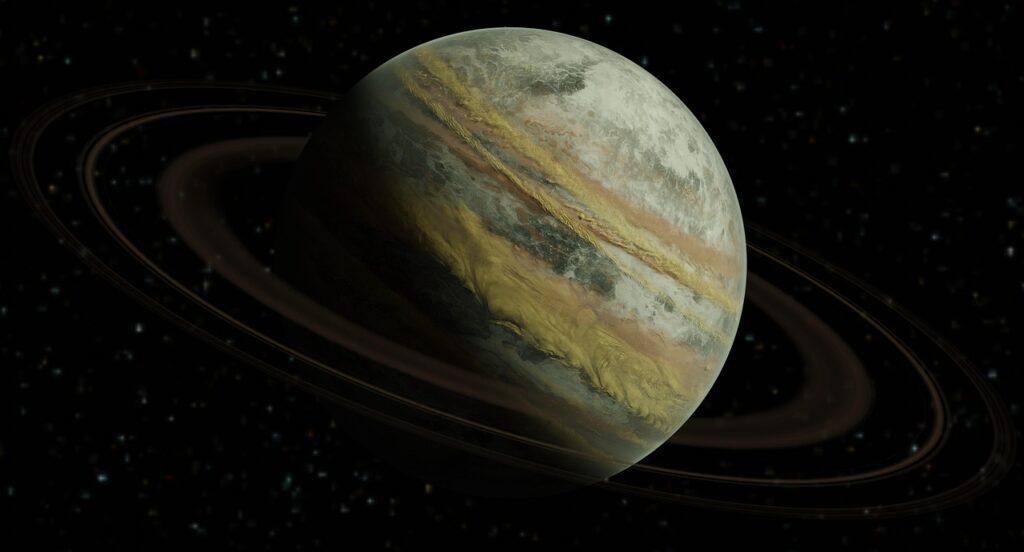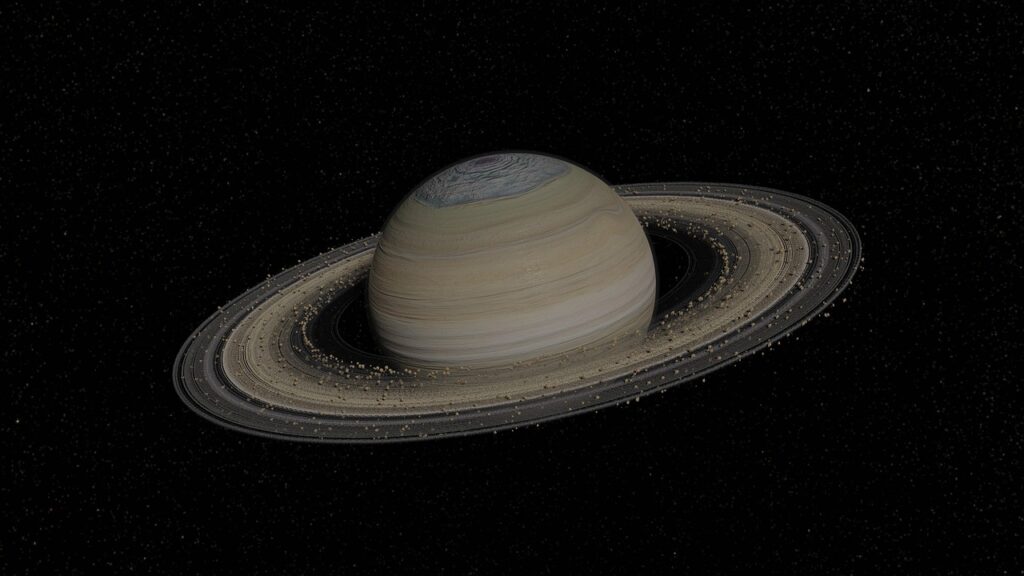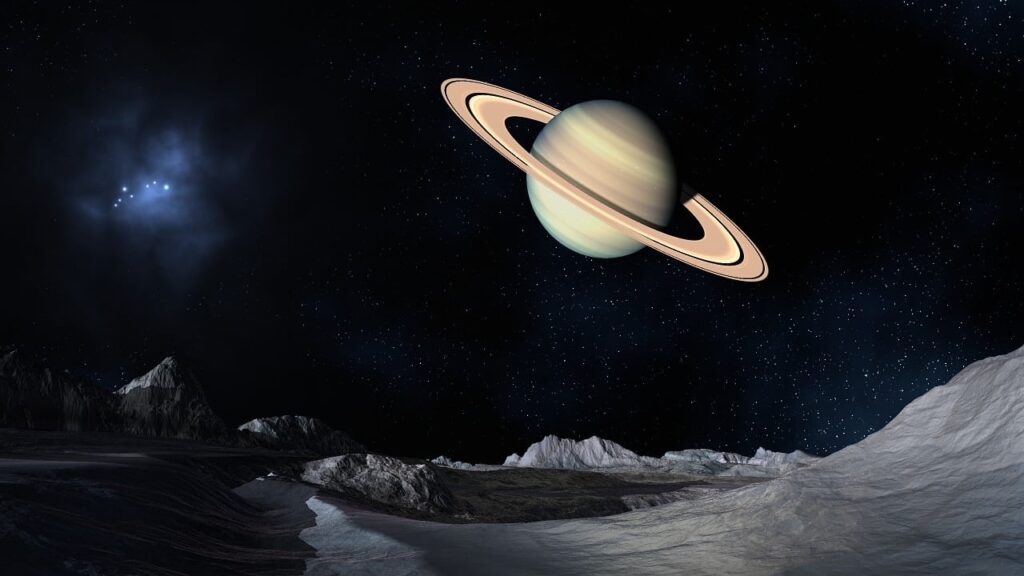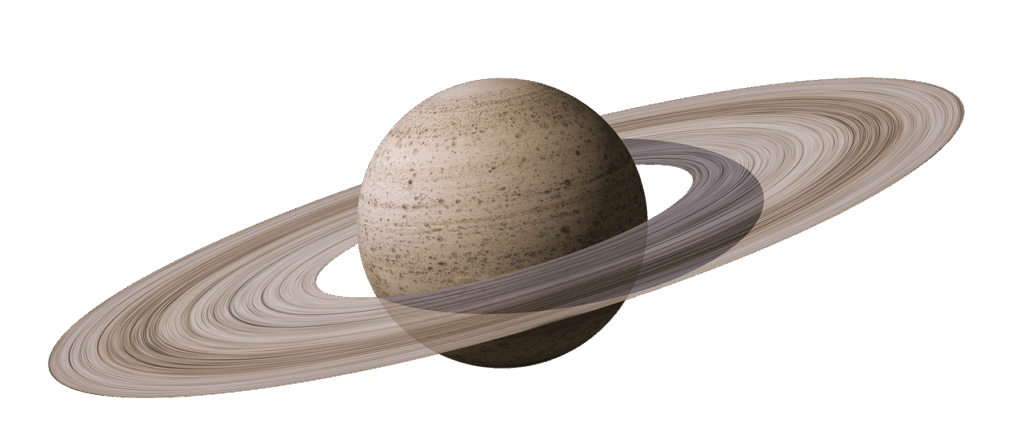
Saturn’s largest moon, Titan, has long captivated the scientific imagination, veiled in a dense, orange haze that obscured its surface from even the most powerful telescopes. For centuries, it remained a mysterious world, a mere dot of light accompanying the ringed giant. The tantalizing possibility of liquid on its surface, however, fueled an insatiable curiosity, hinting at processes that might echo our own planet’s hydrology, albeit under drastically different conditions.
The dawn of a new understanding arrived dramatically in 2005 with the historic landing of the Huygens probe. This audacious mission, a collaborative marvel between NASA and the European Space Agency, tore through Titan’s atmospheric shroud, offering humanity its first intimate glimpse of this distant, alien world. What Huygens revealed was a landscape shaped by dynamic forces, a testament to a complex, active environment previously only theorized.
The images and data transmitted back from Huygens, later augmented by the Cassini orbiter, didn’t just provide pretty pictures; they fundamentally reshaped our perception of Titan. They unveiled a world brimming with geological activity and an active methane cycle, confirming the existence of vast seas and lakes of liquid hydrocarbons. This grand narrative of discovery is one of science pushing boundaries, peering through veils, and ultimately, finding echoes of Earth in the most unexpected corners of our solar system.
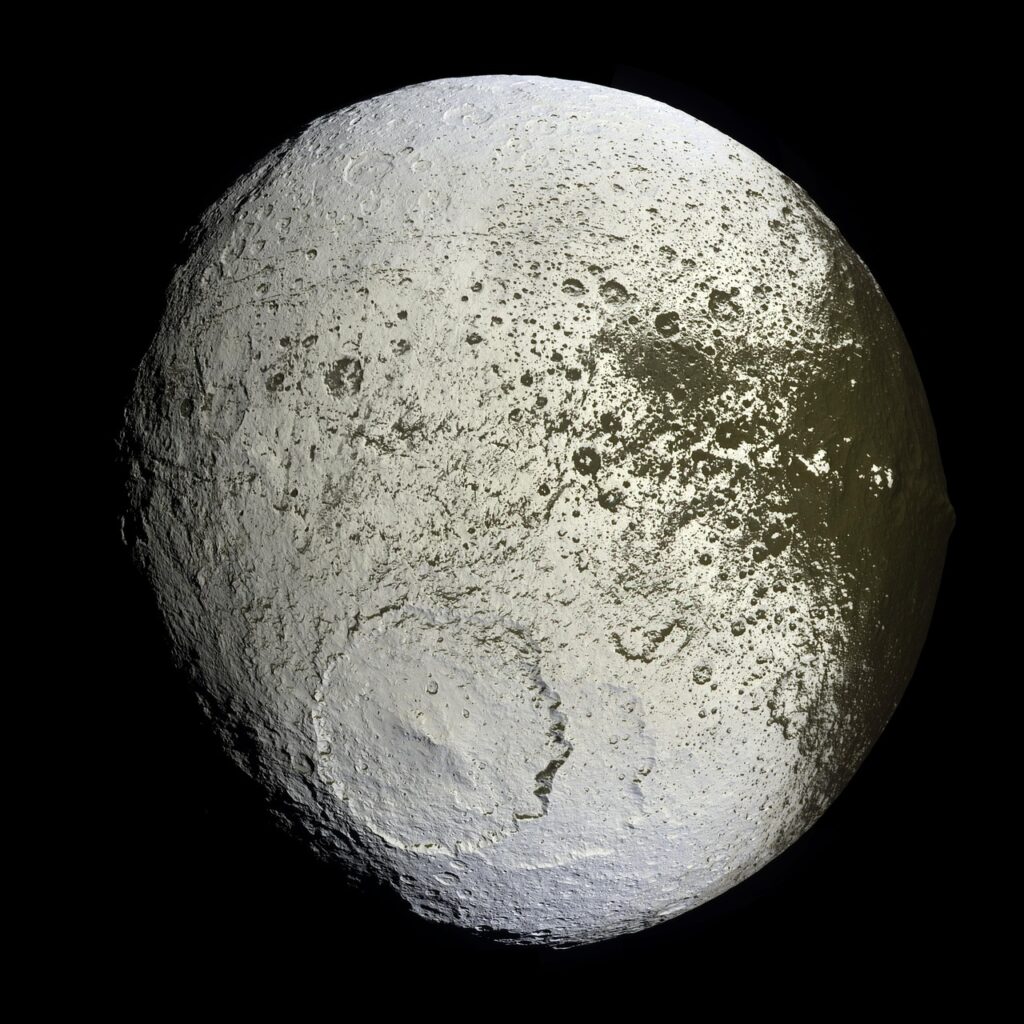
1. **Huygens’ Historic Descent: The First Close Look at Titan**The journey to Titan was a testament to engineering prowess and scientific ambition. The Huygens probe was meticulously crafted as part of the larger Cassini spacecraft mission, which embarked on its epic voyage in 1997. After a seven-year transit, Cassini finally arrived at Saturn in 2004, setting the stage for Huygens’ momentous detachment on December 25 of that year. This carefully planned separation marked the beginning of Huygens’ solo journey towards Titan.
For nearly three weeks, Huygens cruised independently before finally plunging into Titan’s thick atmosphere on January 14, 2005. As it commenced its descent, the probe’s sophisticated cameras sprang to life, initiating a series of image captures that would forever alter our understanding of this moon. These were not just photographs; they were windows into a world previously unseen, collected from a perspective never before achieved.
The descent itself was a slow, deliberate unveiling. The thick haze, characteristic of Titan, gradually thinned as Huygens dropped lower, allowing its instruments to penetrate the atmospheric veil. It was a perilous and precise maneuver, designed to gather as much data as possible during its brief but critical passage through Titan’s complex atmosphere and onto its hidden surface. The success of this descent laid the groundwork for all subsequent discoveries.
2. **Unveiling a Familiar Yet Alien Landscape: Initial Imagery**As Huygens gracefully descended through the dense, orange atmosphere, its cameras began to transmit images that revealed a world both profoundly alien and, strikingly, strangely familiar. Below an altitude of approximately 40 kilometers, the probe’s vision cleared, and the detailed features of Titan’s surface started to emerge. This was the moment scientists had eagerly awaited, a direct visual contact with the moon’s hidden terrain.
The first images captured a landscape characterized by contrasting light and dark regions, hinting at diverse geological compositions or processes. Some expansive areas appeared remarkably smooth, suggesting plains or even bodies of quiescent liquid, while others displayed intricate features strongly resembling river channels. This initial visual data immediately presented a complex picture, sparking intense scientific debate and excitement.
One particular image proved to be exceptionally striking: a network of dark pathways intricately carved through brighter, elevated terrain. This visual evidence powerfully suggested the past or present flow of liquid across the surface, an observation that directly supported long-held suspicions among scientists. The similarities to terrestrial landscapes, despite the vastly different chemical environment, were truly astonishing.

3. **Evidence of Earth-like Erosion: River Channels and Fluid Activity**The presence of these river-like channels and the undeniable evidence of liquid erosion were pivotal discoveries from the Huygens mission. These features were not merely suggestive; they provided compelling proof that Titan experiences precipitation and surface runoff, much like Earth. However, the critical distinction lay in the composition of these fluids: instead of water, Titan’s hydrological cycle revolves around methane and ethane.
This revelation positioned Titan as the only other known body in our solar system, besides Earth, to possess stable liquids on its surface at the time of discovery. (It’s worth noting that NASA has since confirmed stable liquid nitrogen lakes on Pluto). The existence of these processes meant that Titan was a geologically active world, where its landscape was continuously sculpted and reshaped by moving fluids, mirroring the erosional processes that define much of Earth’s topography.
The intricate interplay of precipitation, runoff, and erosion painted a picture of a dynamic moon. The darker areas seen in Huygens’ views, particularly those with channel networks, became strong indicators of past or present liquid activity, possibly shaped by the flow of methane or ethane. This active weather pattern, though cryogenic and hydrocarbon-based, was a powerful testament to Titan’s lively and evolving surface.
4. **The Ground Beneath Huygens: Icy Rocks and Hydrocarbon Layers**As the Huygens probe reached its ultimate destination, gently touching down on Titan’s surface, it continued to transmit invaluable data. The immediate post-landing view revealed a sprawling plain, subtly textured and scattered with numerous small, rounded objects. These intriguing pebbles were quickly identified as likely composed of icy rocks, their smoothed appearance suggesting they had been tumbled and eroded over long periods, possibly by the action of surface liquids.
The ground directly beneath the probe offered further surprises. It appeared to be a unique blend of solid and somewhat soft material, leading scientists to hypothesize that the surface might be overlaid with a thin veneer of hydrocarbons. This texture and composition offered a tangible sense of the moon’s environment, a far cry from the barren, rocky surfaces of many other solar system bodies. It underscored Titan’s distinctiveness.
The combination of surface images and data from instruments like the penetrometer, which studied the ground’s composition upon impact, confirmed the active nature of Titan. While initial reports likened the surface to wet clay or even crème brûlée (a hard crust over sticky material), subsequent analysis suggested the reading was likely caused by Huygens displacing a large pebble. The surface is now better described as a “sand” made of ice grains, offering a more nuanced understanding of this alien terrain.
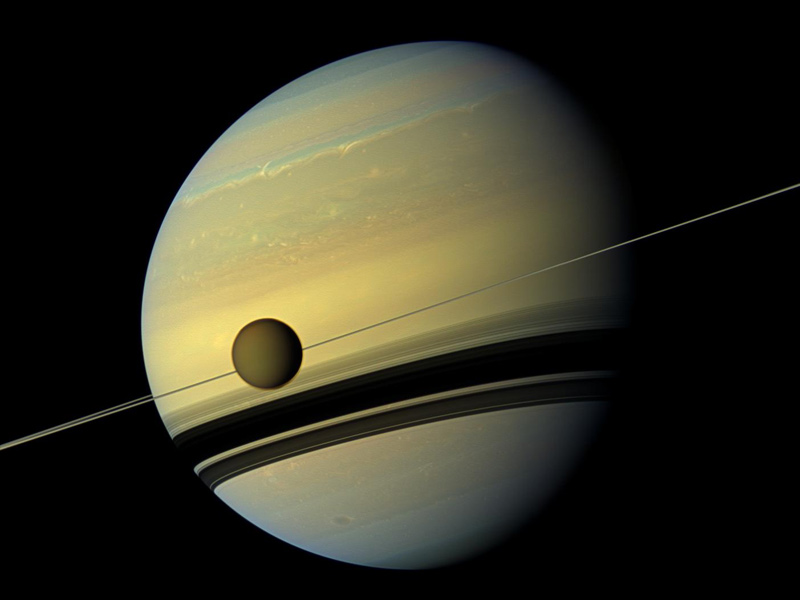
5. **Titan’s Enigmatic Atmosphere: A Hazy, Nitrogen-Rich Blanket**One of the most persistent mysteries surrounding Titan prior to the Huygens mission was the precise nature of its dense atmosphere. Scientists had long understood it to be thick and hazy, but its exact structure, particularly in the lower layers, remained elusive. A significant surprise from the Huygens descent was the discovery that this characteristic haze extended all the way down to the ground, rather than clearing at lower altitudes as some had anticipated.
This dense atmosphere is not merely an aesthetic feature; it is a critical component of Titan’s unique environment. Rich in nitrogen and a complex array of organic molecules, it is considered one of the most Earth-like atmospheres in our solar system, despite the profound differences in temperature and chemistry. While Earth’s atmosphere drives a water cycle, Titan’s sustains a methane cycle, dictating its exotic weather patterns.
The continuous presence of the haze, coupled with the atmospheric composition, profoundly impacts surface conditions and geological processes. It influences temperature, traps heat, and plays a crucial role in the formation and precipitation of methane and ethane. Understanding this atmospheric blanket is key to unraveling the moon’s complete hydrological and geological story, linking the skies directly to the liquid bodies below.
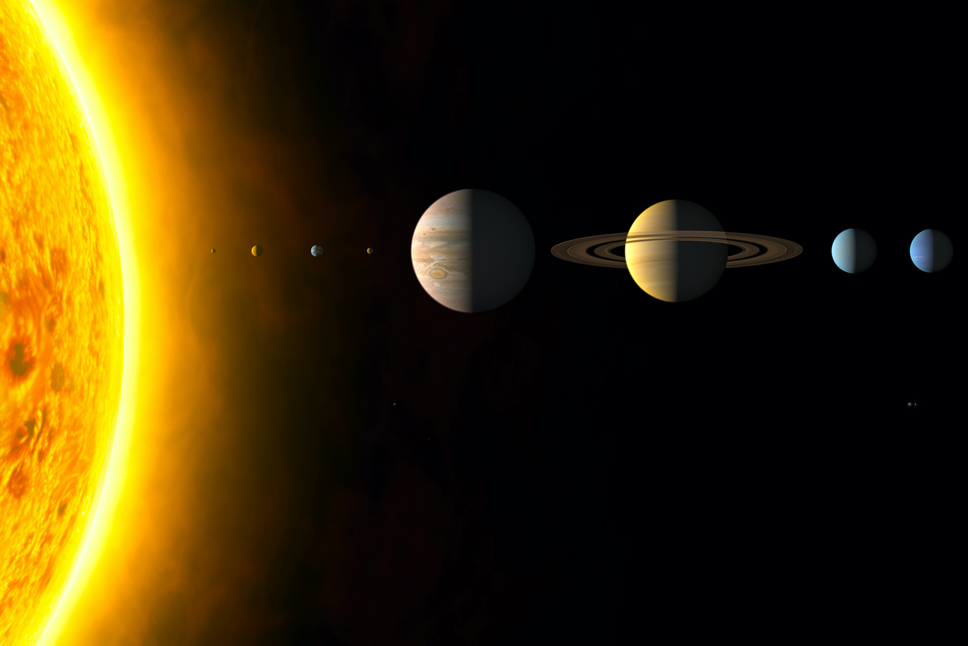
6. **Cassini’s Broader View: Expanding on Huygens’ Discoveries**While the Huygens probe’s operational life on Titan’s surface was brief—only a few precious hours—the data it transmitted proved invaluable, laying a foundational understanding of this distant world. The mission, however, did not end there. In the years following the historic landing, the Cassini spacecraft continued its extended mission, orbiting Saturn and conducting numerous close flybys of Titan.
These subsequent Cassini missions were crucial for building upon the initial insights provided by Huygens. Utilizing its advanced radar and spectrometer instruments, Cassini began to map Titan’s surface with unprecedented detail. These observations provided more comprehensive maps and sophisticated analyses of Titan’s vast surface and its atmospheric dynamics, moving beyond localized snapshots to a global perspective.
The combined efforts of Huygens and Cassini effectively transformed our understanding of Titan from fragmented hypotheses into a coherent, dynamic portrait. They revealed a complex world, one where intricate geological and atmospheric processes, including methane rainfall and shifting surface liquids, were actively at play. This synergistic approach allowed for a much richer and more complete scientific narrative.
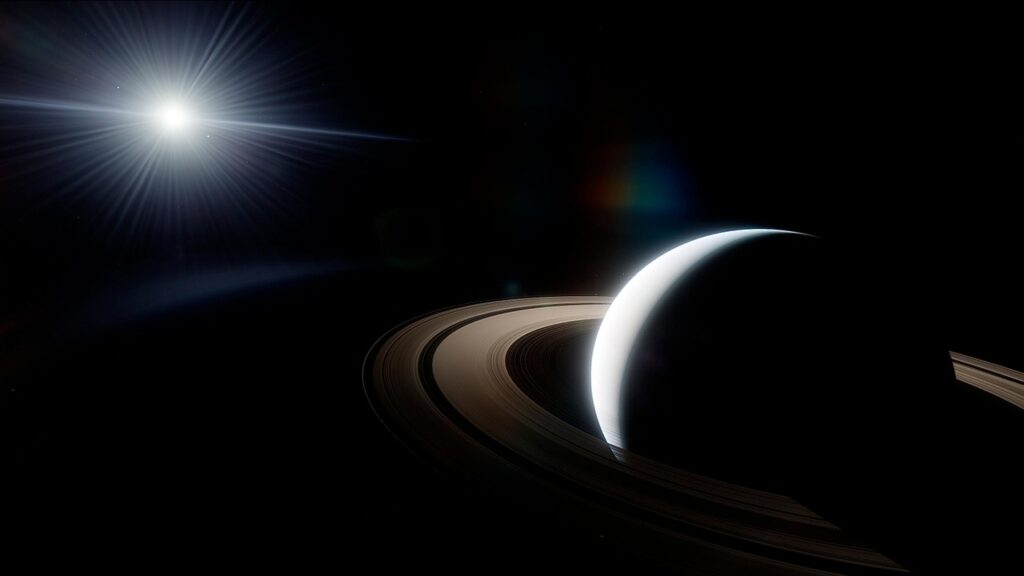
7. **Confirming the Liquid Worlds: Seas and Lakes of Methane and Ethane**The initial tantalizing clues from Voyager probes in the 1980s had suggested the possibility of seas on Titan, based on atmospheric temperature and composition data that could support liquid hydrocarbons. Data from the Hubble Space Telescope in 1995 further hinted at the existence of liquid methane. However, it was the Cassini mission, building directly on Huygens’ groundwork, that provided definitive, undeniable confirmation.
Despite initial hopes that reflected sunlight might immediately reveal liquid bodies, no specular reflections were observed early in Cassini’s mission. The focus then shifted to Titan’s polar regions, where liquid ethane and methane were expected to be most abundant and stable. It was here, in the south polar region, that an enigmatic dark feature named Ontario Lacus was identified as the first suspected lake, potentially fed by observed cloud clusters.
Following a crucial flyby on July 22, 2006, Cassini’s radar imaged the northern latitudes, which were then in their winter season. This flyby revealed numerous large, smooth patches near the pole, appearing dark to radar – a signature of liquid. By January 2007, scientists triumphantly announced “definitive evidence of lakes filled with methane on Saturn’s moon Titan,” confirming the long-sought hydrocarbon lakes as the first stable bodies of surface liquid found off Earth. This discovery marked a monumental achievement in planetary science.
8. **Detailed Characteristics of Titan’s Vast Hydrocarbon Seas**The definitive confirmation of liquid bodies on Titan, thanks to the concerted efforts of the Huygens probe and Cassini orbiter, opened a new chapter in planetary science. While initial observations hinted at their presence, it was Cassini’s radar that truly unveiled the sheer scale and distribution of these exotic liquid worlds. The largest of these, predominantly found in Titan’s polar regions, were subsequently named after sea monsters from world mythology, underscoring their immense and alien nature.
Among the most prominent are Kraken Mare, an immense expanse stretching 1,170 kilometers and covering an area of 400,000 square kilometers, and Ligeia Mare, another colossal body with a length of 500 kilometers and an area of 126,000 square kilometers, making it slightly larger than Earth’s Lake Michigan–Huron. These vast seas, along with Punga Mare, observed to be 380 kilometers long and covering 40,000 square kilometers, represent the most significant reservoirs of surface liquid found beyond Earth. Their existence profoundly reshaped our understanding of planetary hydrography.
Further radar measurements provided astonishing details about these liquid bodies. Ligeia Mare, for instance, was found to possess impressive depths, reaching up to 170 meters (560 feet) in places. In contrast, Ontario Lacus, located in the south polar region and initially identified as the first suspected lake, proved to be remarkably shallow, resembling a terrestrial mudflat with an average depth of only 0.4–3.2 meters. This variability in depth and size hints at diverse geological and hydrological processes at play across Titan’s surface.

9. **The Astounding Chemical Composition and Hydrocarbon Wealth**The liquid bodies of Titan are not merely expansive; they are also repositories of an astonishing chemical wealth. Scientists announced in February 2008 that Titan’s polar lakes harbor “hundreds of times more natural gas and other liquid hydrocarbons than all the known oil and natural gas reserves on Earth.” This incredible abundance extends beyond the visible lakes, as the desert sand dunes along the equator are also estimated to hold more organic compounds than all of Earth’s coal reserves, presenting a world rich in raw materials under cryogenic conditions.
While the exact blend of hydrocarbons varies, computer models suggest that an average polar lake is composed of roughly three-quarters ethane, with about 10 percent methane, 7 percent propane, and smaller quantities of hydrogen cyanide, butane, nitrogen, and argon. This complex mixture forms the basis of Titan’s unique hydrological cycle. Benzene, too, is expected to fall like snow from the atmosphere, dissolving quickly into the lakes, though they might eventually become saturated, leading to a build-up of benzene-rich mud-like sludge on the shores and lake floors.
This chemical complexity also gives rise to predictions of other fascinating compounds, such as salt-like formations composed of ammonia and acetylene. Crucially, the chemical composition and physical properties are not uniform across all lakes, as Cassini observations in 2013 indicated Ligeia Mare is filled with a ternary mixture of methane, ethane, and nitrogen. This dynamic chemical environment means that each lake on Titan presents a unique chemical fingerprint, awaiting future, more detailed analysis.
10. **The Enigmatic Surfaces: Unraveling the Mystery of Waves and Smoothness**For a long time, the surfaces of Titan’s hydrocarbon lakes presented a perplexing enigma. When the northern lakes emerged from winter darkness, Cassini initially detected no waves, despite calculations suggesting that wind speeds exceeding 1 meter per second (2.2 mph) should be capable of whipping up discernible waves in ethane lakes. This absence led to speculation about either very low seasonal winds or even the solidification of hydrocarbons, turning the liquid bodies into vast, frozen expanses.
Further theoretical investigations into the physical properties of these unique liquids shed more light on the situation. The optical properties of solid methane, particularly when close to its melting point, are remarkably similar to those of a liquid surface, which could account for the observed smoothness. However, the viscosity of solid methane is many orders of magnitude higher, posing a challenge to the “solidification” hypothesis. Interestingly, solid methane is denser than liquid methane and should sink, yet it might float temporarily if it contains bubbles of nitrogen gas from Titan’s atmosphere, creating a complex interplay of floating and sinking ice layers.
Since 2014, Cassini has detected transient features, such as radar-bright “magic islands,” in scattered patches across Kraken Mare, Ligeia Mare, and Punga Mare. Laboratory experiments propose that these features could be vast patches of bubbles, resulting from the rapid release of nitrogen dissolved in the lakes. These “bubble outburst events” are predicted to occur as lakes cool and warm, or when methane-rich fluids mix with ethane-rich ones after heavy rainfall, potentially even influencing the formation of Titan’s river deltas. An alternative explanation suggests these transient features might be shallow, wind-driven capillary waves, or ripples, moving at about 0.7 m/s (1.6 mph) with heights of about 1.5 centimeters.
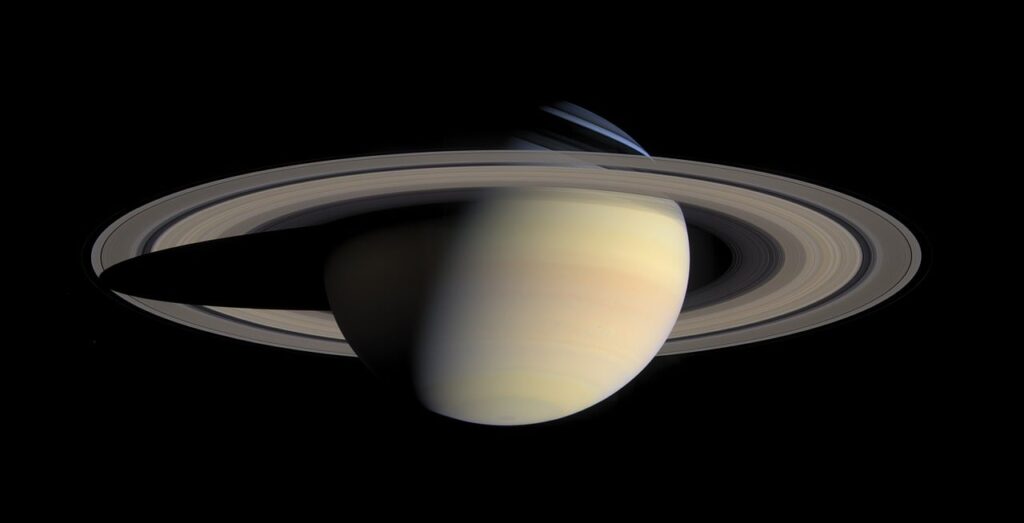
11. **Dynamic Processes: Weather, Cyclones, and Tidal Currents**Titan’s atmosphere and surface liquids engage in dynamic processes, creating weather patterns that, while alien in composition, echo Earth’s hydrological cycle. Models predict that cyclones, driven by evaporation and involving both rain and gale-force winds of up to 20 m/s (45 mph), should form over the large northern seas—Kraken Mare, Ligeia Mare, and Punga Mare—during the northern summer. These powerful weather events could last for up to ten days, dramatically reshaping the atmosphere above these colossal liquid bodies.
However, a 2017 analysis of Cassini data spanning from 2007 to 2015 introduced a surprising twist to these predictions. It indicated that waves across these three seas remained diminutive, reaching only about 1 centimeter (0.39 inches) high and 20 centimeters (7.9 inches) long. These findings call into question the earlier classification of early summer as the beginning of Titan’s windy season, as high winds would typically generate much larger waves. A theoretical study in 2019 offered a potential resolution, concluding that dense aerosols raining down on Titan’s lakes might possess liquid-repelling properties, forming a persistent film on the surface that could effectively inhibit the formation of larger waves.
Beyond atmospheric interactions, other dynamic forces are at play. Post-Cassini analysis of VIMS data suggests that tidal currents may be responsible for generating persistent waves within the narrow channels, or Freta, of Kraken Mare, indicating gravitational interactions also sculpt the liquid landscape. Furthermore, while the equatorial regions typically experience long periods of drought, Cassini has observed rare, intense equatorial rainstorms. These downpours, occurring perhaps once a decade or century, are expected to cause flash floods of several meters (15–20 feet) of liquid, interspersed by long dry spells, contributing to Titan’s uniquely varied and active weather system.
12. **Formation Mechanisms: Atmospheric Circulation Versus Geology**Understanding how Titan’s vast lakes and seas came to be is a cornerstone of deciphering its geological history. Early models of oscillations in Titan’s atmospheric circulation proposed that liquid is systematically transported from the equatorial region to the poles over the course of a Saturnian year, where it then falls as rain. This atmospheric conveyor belt could account for the relative dryness observed near the equator and the concentration of permanent liquid bodies in the polar regions, where the relative absence of sunlight makes it easier for methane to accumulate.
This model also offered an explanation for the observed asymmetry in lake distribution, predicting more lakes in the northern hemisphere. Due to the eccentricity of Saturn’s orbit, the northern summer is significantly longer than the southern summer, leading to a prolonged rainy season in the north and thus greater accumulation of liquid. Intense rainstorms, capable of carving the types of channels Huygens found, were also predicted to occur in normally rainless equatorial areas during Titan’s vernal and autumnal equinoxes, further supporting the atmospheric circulation hypothesis.
However, more recent Cassini observations from 2013 suggest that geology also plays a crucial, perhaps even dominant, role in explaining the geographic distribution and formation of these features. One perplexing observation is the scarcity of impact craters at the poles and mid-latitudes, particularly at lower elevations. This suggests that these areas may be wetlands fed by subsurface ethane and methane springs, akin to groundwater on Earth. Any craters formed by meteorites would thus be quickly subsumed and erased by wet sediment, explaining their absence. The presence of underground aquifers could also resolve another long-standing mystery: why, despite continuous methane-to-ethane conversion by ultraviolet radiation, Titan hasn’t accumulated a planet-wide ethane ocean hundreds of meters deep, as the ethane likely soaks into these subsurface layers. The involvement of clathrates, which alter the chemical composition of rainfall runoff, further influences these subsurface hydrocarbon “aquifers,” creating reservoirs of propane and ethane that feed into some rivers and lakes, leading to distinct chemical compositions based on their source.

13. **Distinctive Lake Shapes and Their Geological Origins**The morphology of Titan’s lakes offers tantalizing clues about their formation. A remarkable 97% of Titan’s known lakes are concentrated within a distinctive bright terrain unit near the north pole, spanning an area of about 900 by 1,800 kilometers. The lakes in this region exhibit highly characteristic shapes: they are often rounded, possess complex silhouettes, and are characterized by steep sides. These striking features strongly suggest that tectonic deformation of the moon’s crust created fissures and depressions, which subsequently filled with liquid hydrocarbons.
Various mechanisms have been proposed to explain these unique formations. One hypothesis points to the collapse of land following cryovolcanic eruptions, where icy material from beneath the surface is expelled, creating depressions that collect liquid. Another compelling explanation draws parallels to karst terrain on Earth, where soluble rock, in this case, soluble ice, is dissolved by flowing liquids, leading to the formation of sinkholes and intricate underground cave systems that eventually collapse to form surface lakes.
An even more dramatic theory likens some of the smaller lakes, those up to tens of miles across with steep rims reaching hundreds of feet high, to terrestrial maar lakes. These explosion craters on Earth are formed by violent eruptions of groundwater coming into contact with magma. On Titan, the proposed mechanism involves fluctuations in climate leading to pockets of liquid nitrogen accumulating within the crust during colder periods. Subsequent warming would cause this nitrogen to rapidly expand and transition into a gas state, triggering powerful subsurface explosions that create these distinctive crater-like depressions, which then fill with liquid hydrocarbons. These diverse geological processes paint a picture of a moon whose surface is continuously shaped by dynamic forces from both above and below.
Read more about: Unearthing the Enigmas: 14 Mysterious Global Sites That Beckon Every Adventurer and Pilgrim
14. **Equatorial Discoveries and the Enigma of Titan’s “Oases”**While the polar regions teem with vast seas and lakes, the equatorial regions of Titan presented a different, yet equally compelling, puzzle. The Huygens probe, landing near Titan’s equator in January 2005, found no open areas of liquid. Instead, its images revealed pale hills crisscrossed with dark drainage channels, leading into a wide, flat, darker region. While initially thought to potentially be a liquid or tar-like substance, it became clear that Huygens landed on a solid surface, better described as a “sand” made of ice grains, with no immediate indications of standing liquids.
Despite the arid appearance, the equatorial environment harbored its own secrets. Thermometers on Huygens indicated that heat was wicked away so quickly from the probe that the ground must have been damp, and one image even captured light reflected by a dewdrop, hinting at a subtle presence of moisture. Titan’s weather in these regions is expected to feature infrequent but intense downpours of several meters of liquid, causing flash floods, interspersed by decades or even centuries of drought, a stark contrast to Earth’s more consistent rainfall.
Adding another layer of intrigue, in 2012, Cassini unexpectedly discovered a number of long-standing tropical hydrocarbon lakes. One such lake, near the Huygens landing site in the Shangri-La region, was found to be about half the size of Utah’s Great Salt Lake and at least 1 meter deep. This discovery of persistent liquid bodies in seemingly arid equatorial zones strongly suggests the presence of underground aquifers, much like on Earth. These subsurface reservoirs likely feed these tropical lakes, creating true “oases” in what was once thought to be a uniformly dry equatorial landscape, further emphasizing Titan’s hydrological complexity.
15. **Future Exploration Prospects and the Nomenclature of an Alien World**As our understanding of Titan deepens, so too does the scientific community’s ambition for future exploration. The proposed Titan Mare Explorer (TiME) mission, a collaborative NASA/ESA lander, aimed to splash down directly onto Ligeia Mare and conduct in-situ analysis of its surface, shoreline, and atmosphere. This daring concept, however, was ultimately turned down in August 2012 in favor of the InSight mission to Mars, leaving the dream of a direct liquid landing unfulfilled for now. Nevertheless, the spirit of exploring Titan’s unique environment lives on with NASA’s planned Dragonfly rotorcraft, which will build upon Huygens’ findings and take the next significant steps in uncovering Titan’s secrets.
To systematically catalog and comprehend this dynamically evolving world, a meticulous nomenclature system has been established for Titan’s diverse features. The large bodies of liquid are known as maria, named after sea monsters in world mythology, reflecting their colossal and often mysterious nature. Smaller liquid bodies are designated as lacus, deriving their names from lakes on Earth, providing a relatable reference point. Features identified as lacunae represent believed dry lake beds, also named after intermittent lakes on our home planet.
Further adding to this rich geographical tapestry are features labeled sinus, which are bays within the lakes or seas, named after terrestrial bays and fjords. Islands within these liquid bodies are termed insulae, drawing their names from mythical islands, imbuing Titan’s cartography with a sense of ancient wonder. This thoughtful naming convention not only aids scientific communication but also connects this distant, alien moon to human cultural narratives, allowing us to grasp the immensity and peculiarity of its landscapes. Titan continues to stand as a beacon of scientific intrigue, a world where exotic chemistry and Earth-like processes converge, promising even greater discoveries in the years to come.

